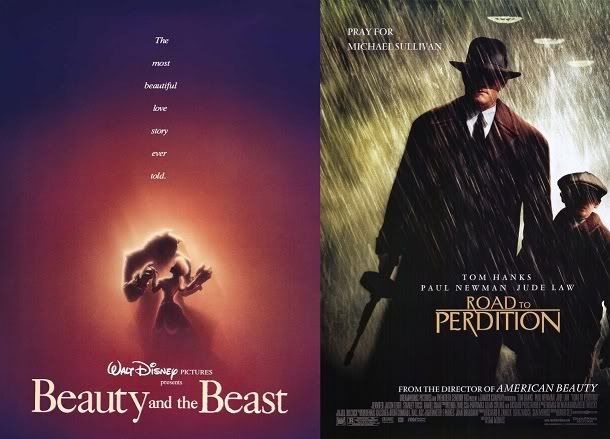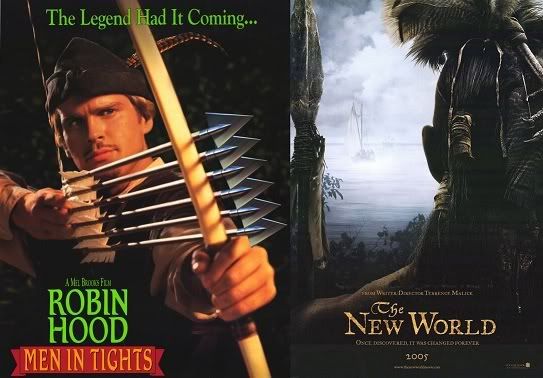This review is based on the Kino restoration version of “Nosferatu: A Symphony of Horror” (or, as I like to yell at the top of my lungs, “NOSTFERATU: EINE SYMPHONIE DES GRAUENS”), although I tried to make the review vague enough to apply to all versions. The most notable difference featured in the Kino version is the tinted film. It is mildly irritating at first (it looks like the film has been run through a vat of urine) but you get used to it. The images themselves, though, are crystal clear and the action is in real-time (as opposed to being sped up like a Mack Sennett short). There are also several minutes of additional footage and new classy English translations of the original German intertitles.
The further back we go in filmdom the more we should apply context to our movie-viewing experience. We have grown so accustomed to the polished pieces of art that is today’s film that we forget that “crappy” was once the best thing available. Films need to be forgiven for being rough around the edges -- somewhat so if they were made in 1992, more so if they were made in 1922.
Things we need to remember while watching “Nosferatu”:
1) This film is almost 90 years old. Do you know what else happened in 1922? The first radio was introduced to the White House. Construction on Yankee Stadium began. Vegemite was invented. The French were still executing each other with guillotines. Betty White was born. This was a long freaking time ago.
2) The first horror movie was released only two years prior (“The Cabinet of Dr. Caligari”). Creepy movie-making was still in its infancy.
3) Movie-making itself was still relatively young. The very first (first!) full-length feature film (“The Story of the Kelly Gang”) was only released 16 years before “Nosferatu.” For context, do you know what film was released 16 years ago? “Toy Story.” So, not all that long ago.
4) Special effects were created using stop-motion camera tricks. Maybe you could overlap the film to create a ghost or something. I could probably recreate the special effects from this era in my bedroom using Marty McFly’s video camera and some cardboard.
5) For goodness sake, they couldn’t even make the characters talk until the end of the decade.
6) Film degenerates over time.
7) Film gets lost over time.
8) We are only just now realizing that you don’t have to play back silent movies at double-speed.
So you do have to excuse some faults of “Nosferatu,” distracting as they are.
Today this film might not scare a 10-year-old, but I can almost guarantee you someone in those early German theaters crapped their liederhosen. In fact, I still find this film genuinely creepy. That long shot of Count Orlok in the building across the street, standing in the window, staring, staring, staring... WHAT?
The ending is a bit anti-climactic, and there is good reason for that. First of all, movie-makers hadn’t yet perfected the over-the-top Death Star blow-up climax. What we are left with are endings, final and resolute. Secondly, and somewhat humorously to me, the ending was altered to differ from Bram Stoker’s “Dracula,” as if nobody could tell up to that point that this was an unauthorized adaptation. So instead of dramatically stabbing Count Dracula in the chest with a knife we have Count Orlok forgetting to check the clock.
[Incidentally the Stoker estate did in fact notice that the film dumped all over copyright laws and took the production company to court. The estate won and all copies of the film were ordered destroyed (freakin’ Germany). However, the film had already distributed the film internationally and thankfully several prints survived.]
I don’t know if this is seen in all readily available versions, but in one scene I can see the arm of a stage-hand in a shot. Audiences of the time probably didn’t care. Shoot, I’ve seen dangling boom mics in “The Happening” and “The Patriot.” Less forgiving, though, is the shot of nature somehow flipped upside-down. This is only in the Kino restoration version, so I blame lazy restorers (who otherwise did a stellar job). But yes, the cascading water is dripping up.
I’ll tell you what I love about this film. I love Hutter. He’s like an excitable puppy. He is literally running through every scene. He is jumping. He is throwing stuff everywhere. This in contrast to his ever-brooding wife. She is sad because the flowers he gives her will die. He laughs and spins around the room. I enjoy every awkward moment they spend together.
I love the scenery... both in the city and in the countryside, both the interiors and the exteriors. Actual in-use buildings were utilized and many still stand today. It’s all very beautiful. Beautiful and eerie.
I love German Expressionism in film. All those shadows. All those angles.
I love Count Orlok. He may just be a creepy old man, but he is the creepiest old man ever.
And I love the boat scenes. I always forget about the boat scenes in whichever versions of Dracula I’m reading/watching. Dude takes out a whole ship full of crusty old sailors, but he picks them off gradually, slowly, one-by-one. And then the first mate and the captain remain. And then just the captain remains. And then an empty ship guides itself into the harbor. That is awesome.
There is at least one good reason why everybody should watch this film. It was the first vampire movie ever made. Every self-respecting vampire flick, from “Dracula” to “Blackula” to “Buffy” to “Blade,” owes “Nosferatu” for setting the standards on dark imagery, bizarre characters, and that peculiar rule about sunlight vaporizing the undead. Even beyond that it’s just a good movie.
I rate “Nosferatu: A Symphony of Horror” four puncture wounds on the neck... out of five.


After reading your review, I think I may re-watch this and get an older version than the one I reviewed.
ReplyDelete